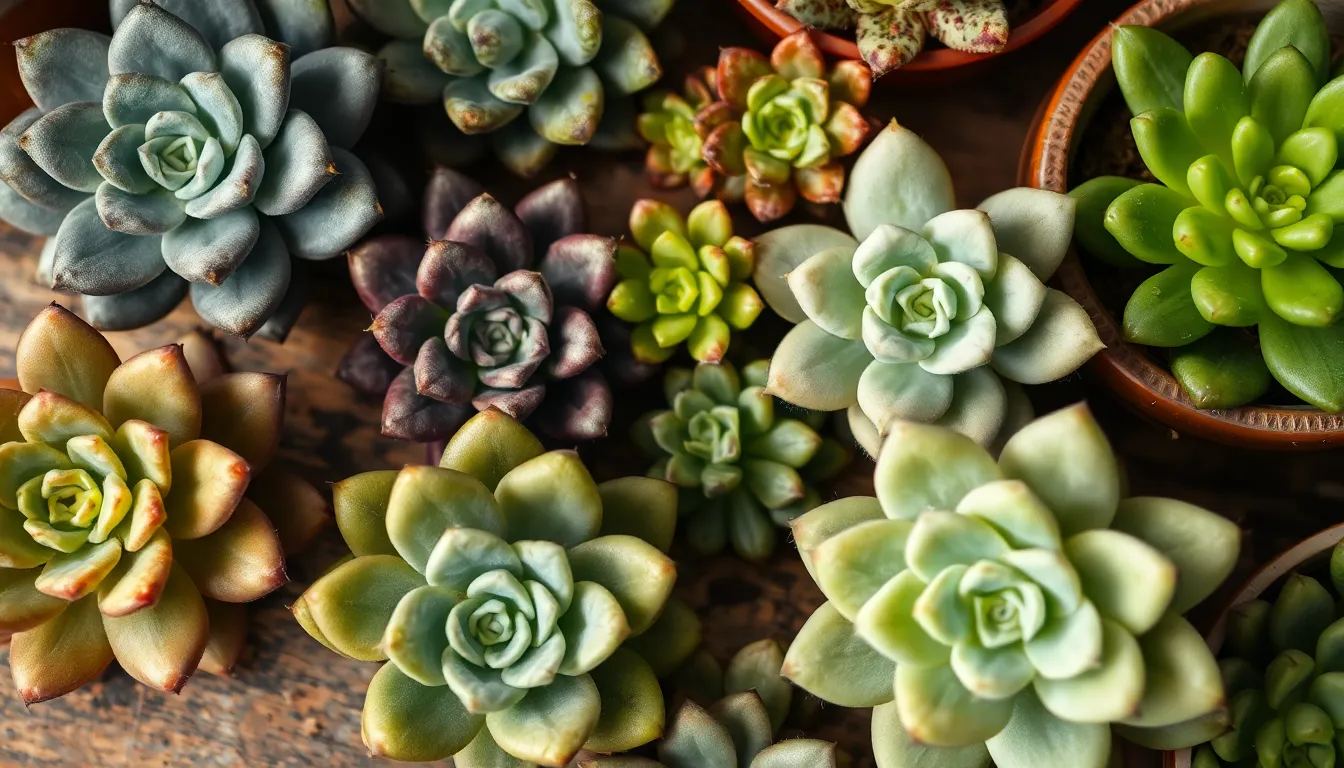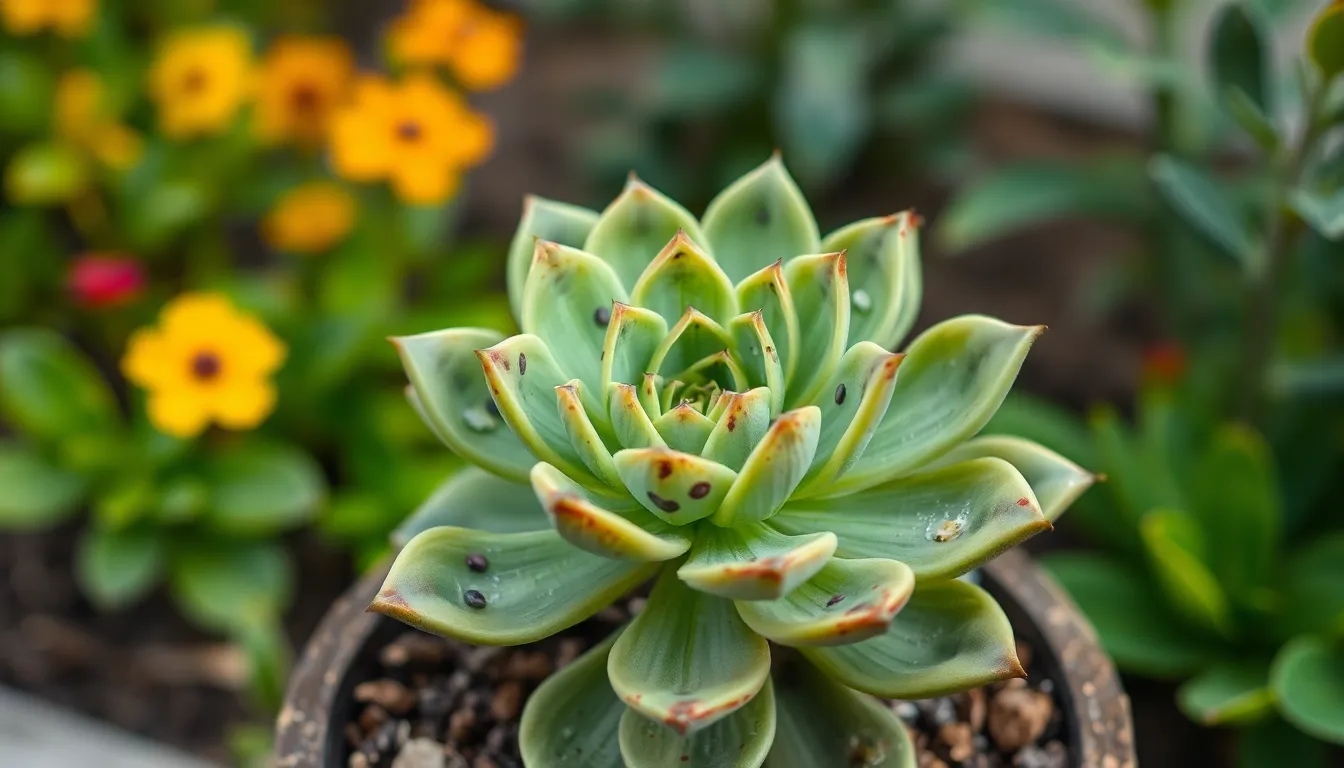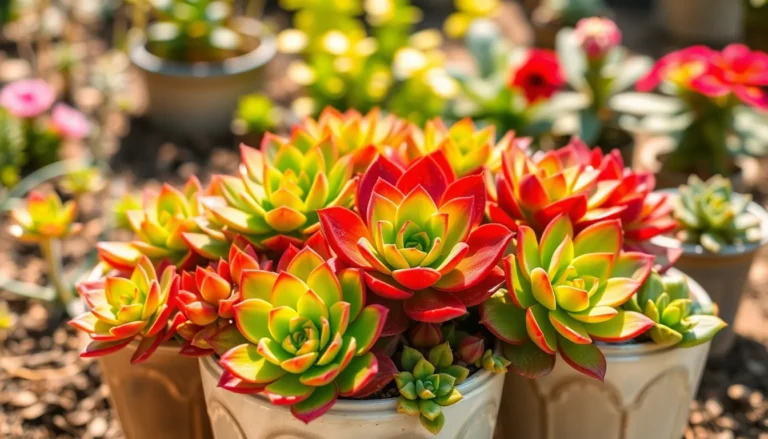Succulents are the rock stars of the plant world—low maintenance, stylish, and always ready to brighten up a room. But even these tough little beauties can fall victim to pesky fungi that threaten their vibrant appearance. Imagine your beloved jade plant, looking more like a sad, wilting potato than the stunning centerpiece it once was. That’s where fungicides come to the rescue!
Fungicide For Succulents
Succulents thrive in arid environments, making them distinct among houseplants. These plants store water in their leaves, stems, or roots, allowing them to survive in limited water conditions. Sunlight plays a crucial role in their growth, with most succulents requiring at least six hours of indirect light daily.
Well-draining soil is essential for these plants, preventing root rot and ensuring longevity. A cactus mix or a blend incorporating perlite works effectively to provide the needed drainage. Watering practices also differ; overwatering can lead to fungal infections, while underwatering may cause dehydration.
Humidity levels should stay low, as succulents naturally flourish in dry air. Temperatures should remain between 60°F and 80°F for optimal health, with most succulents exhibiting a strong preference for warmth. Fertilizing during the growing season enhances nutrient intake, but care should be taken not to over-fertilize, as this can weaken the plant.
Pest control is another critical aspect of maintaining succulent health. Regular checks for common pests like mealybugs and aphids help prevent infestations. Fungal issues can emerge when conditions become overly humid or plants stay too wet; this highlights the importance of using a fungicide for prevention and treatment.
Healthy succulents offer beauty and resilience, making them popular choices for plant enthusiasts. Understanding their specific needs ensures they thrive, showcasing their vibrant colors and unique textures in any home environment.
Common Pests and Diseases in Succulents

Succulents face various pests and diseases that threaten their health. Understanding how to identify these issues can help maintain vibrant plants.
Identifying Fungal Infections
Fungal infections in succulents often appear as dark spots or patches on leaves. Root rot, common in overwatered plants, manifests as a soft and mushy base. Powdery mildew creates a dusty white film on foliage. These infections thrive in damp conditions, making it essential to monitor humidity levels. Inspecting plants regularly helps in catching these issues early.
Signs of a Problem
Common signs of problems include wilting, yellowing leaves, and stunted growth. Discoloration or unusual leaf shapes signals potential pest infestations or diseases. Sticky residue on leaves indicates pest presence, while webbing could point toward spider mites. By observing these symptoms closely, timely intervention can prevent further damage. Regular care and vigilance keep succulents thriving and beautiful.
Choosing the Right Fungicide for Succulents

Selecting the appropriate fungicide is essential for maintaining healthy succulents. Different fungicides target various fungal issues, so understanding these options minimizes plant stress.
Types of Fungicides
Fungicides fall into two main categories: systemic and contact. Systemic fungicides penetrate plant tissues, providing internal defense against infections. These work for root rot and other systemic issues. Contact fungicides, on the other hand, stay on plant surfaces, effectively managing external fungal threats. Powdery mildew and leaf spot often respond well to these treatments. It’s crucial to match the product to the specific fungal issue present, ensuring the best chance of recovery.
Organic vs. Chemical Options
Organic fungicides use natural ingredients like neem oil and sulfur. These tend to be less harsh and often promote overall plant health. Chemical fungicides, however, rely on synthetic compounds for rapid action. They may provide quicker results but can cause stress to sensitive succulents. Evaluating the severity of the fungal problem helps determine the best choice. Overall, organic options are ideal for routine care, while chemical solutions may suit severe infestations.
Application Techniques
Effective application techniques are essential for treating succulents with fungicides. Proper methods maximize results and protect plant health.
How to Apply Fungicide
Fungicide application starts by ensuring the plant is dry. Apply fungicide in the early morning or late afternoon. Focus on both the upper and underside of leaves for comprehensive coverage. Use a spray bottle or applicator for precision. Avoid over-soaking the soil to prevent root rot. A second application may be necessary seven to ten days later, particularly for persistent infections. Observe the plant’s response and adjust treatment as needed.
Safety Precautions
Safety precautions protect both the user and the plants. Wear gloves to shield hands from chemicals while applying fungicides. Ensure proper ventilation in the application area to minimize inhalation of fumes. Read the product label for specific instructions regarding application and safety measures. Keep fungicides away from pets and children to prevent accidental exposure. Store fungicides in a cool, dry place, and dispose of any unused product responsibly. Prioritizing safety creates a healthier environment for both the gardener and the succulents.
Preventative Measures
Maintaining succulents requires attention to detail. Implementing specific practices helps prevent fungal issues in these resilient plants.
Best Practices for Succulent Care
Providing the right environment benefits succulent health. Ensure they receive at least six hours of indirect sunlight daily. Using well-draining soil further enhances growth, preventing root rot. Regular monitoring for pests like mealybugs keeps infestations at bay. Observe succulents for signs of distress, such as wilting or yellowing leaves. Keeping humidity levels low aids in creating an ideal atmosphere. Following these practices supports overall plant vitality.
Avoiding Overwatering
Avoiding overwatering is crucial for succulent care. Watering only when the soil is dry prevents root rot, a common fungal issue. Checking the moisture level helps maintain proper hydration. Typically, watering every two weeks suffices, although this may vary based on climate. Adjusting frequency based on seasonal changes can further enhance plant health. Emphasizing careful watering prevents stress, allowing the succulent to thrive in its environment.
Conclusion
Maintaining the health of succulents requires vigilance and the right tools. Fungicides play a crucial role in combating fungal infections that threaten these beloved plants. By choosing the appropriate fungicide and applying it correctly, succulent owners can protect their plants from damage and restore their natural beauty.
Regular monitoring and proper care practices are essential for preventing fungal issues. With the right approach to sunlight, watering, and soil conditions, succulents can thrive. By staying informed and proactive, anyone can enjoy the vibrant allure of succulents in their home for years to come.





